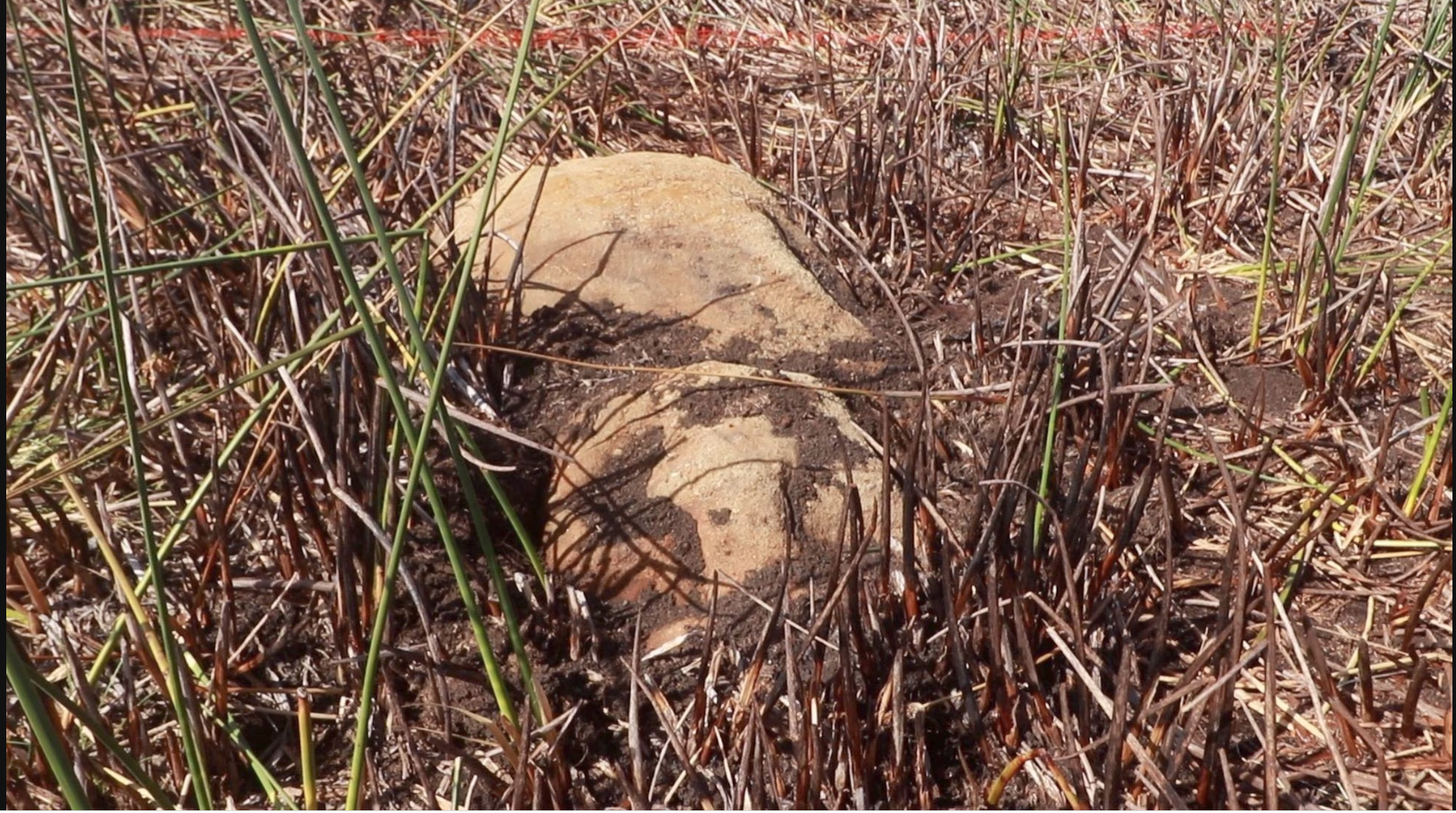HALLADO UN NUEVO MOÁI EN LA ISLA DE PASCUA
La crisis climática, entre la que se encuentra la falta de lluvia y un grave incendio, ha dejado al descubierto una escultura moái de 1.60 metros de alto y 90 cm de ancho en las profundidades del volcán Rano Raraku. Se trata de un gran descubrimiento para la comunidad rapanui. También aparecieron otros artefactos y fragmentos de piedra que podrán pertenecer a otra escultura.
El incendio de octubre quemó más de 100 hectáreas de pastizales de la isla volcánica y perjudicó unos 80 moáis. Un equipo de voluntariado científico de las universidades de Chile, Andrés Bello y O’Higgins está colaborando con Ma’u Henua y la Corporación Nacional Forestal (Conaf). Fue este grupo el que avisó del hallazgo el 20 de febrero, haciéndolo público la primera semana de marzo.
El volcán Rano Raraku se formó hace unos 300.000 años, moldeando la identidad de la isla de Pascua al ser cantera de los moái. De esta manera, los ancestros rapanui construyeron casi 900 estatuas de piedra volcánica, formando el museo abierto más grande del mundo con el tipo de roca característica de este volcán, la toba lapilli. El cráter ha albergado en su interior una laguna de agua dulce que hace cinco años empezó a desaparecer por la sequía. Hace 30 años, la pluviometría de Pascua era de 2.400 mm de agua anuales y hoy está en 1.200 mm.
Por otro lado, la altura promedio de los moái es de unos 10 a 12 metros de alto; uno de ellos supera los 20 m.
El alcalde, Pedro Edmunds, que ha ejercido durante cinco períodos de manera itinerante desde 1994 sostiene que “no hay memoria reciente de un descubrimiento como éste”. Además, Salvador Atan Hito, vicepresidente de la comunidad indígena Ma’u Henua, administradora del Parque Nacional Rapa Nui, ha añadido que nunca pensaban que podían encontrar esos hallazgos arqueológicos en la zona.
Actualmente, la escultura hallada se encuentra sometida a un debate con dos posturas diferenciadas: la que cree que no hay que alterar la escultura y dejar que los ancestros descansen en paz y la que quiere investigarla científicamente.
Por su parte, el alcalde considera que la última palabra la tienen las familias rapanui y el consejo de ancianos, los que hoy tienen la “tuición de la cultura rapanui” junto con la administración del parque.
__
NEW MOAI FOUND IN EASTER ISLAND
The climatic crisis, including the lack of rain and a serious fire, has uncovered a moai sculpture 1.60 meters high and 90 cm wide in the depths of the Rano Raraku volcano. This is a great discovery for the Rapa Nui community. Other artifacts and stone fragments that may belong to another sculpture were also found.
The October fire burned more than 100 hectares of grassland on the volcanic island and damaged some 80 moai. A team of scientific volunteers from the universities of Chile, Andrés Bello and O’Higgins is collaborating with Ma’u Henua and the National Forestry Corporation (Conaf). It was this group that reported the discovery on February 20, making it public the first week of March.
The Rano Raraku volcano was formed some 300,000 years ago, molding the identity of Easter Island as a moai quarry. In this way, the Rapa Nui ancestors built almost 900 volcanic stone statues, forming the largest open museum in the world with the type of rock characteristic of this volcano, the lapilli tuff. The crater has housed in its interior a freshwater lagoon that five years ago began to disappear due to drought. Thirty years ago, Easter Island’s rainfall was 2,400 mm of water per year and today it is 1,200 mm.
On the other hand, the average height of the moai is about 10 to 12 meters high; one of them exceeds 20 meters.
The mayor, Pedro Edmunds, who has served five terms on an itinerant basis since 1994, maintains that “there is no recent memory of a discovery like this one”. In addition, Salvador Atan Hito, vice-president of the indigenous community Ma’u Henua, administrator of the Rapa Nui National Park, added that they never thought they could find such archaeological findings in the area.
Currently, the sculpture found is subject to a debate with two different positions: the one that believes that the sculpture should not be altered and let the ancestors rest in peace and the one that wants to investigate it scientifically.
For his part, the mayor considers that the last word will be left to the Rapa Nui families and the council of elders, who today have the “guardianship of the Rapa Nui culture” along with the park administration.
__

